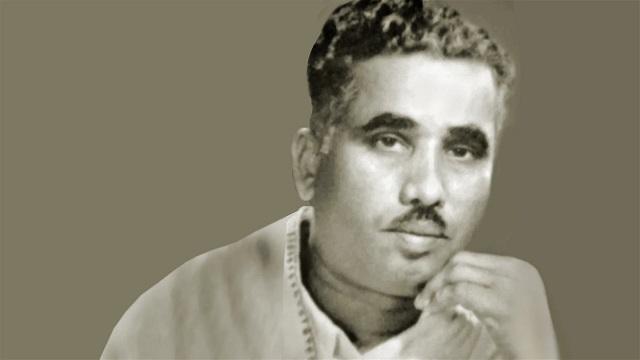
సినిమా సకల జన రంజకంగా ఉండాలి. సర్వకళ సమ్మేళనం కనుక అన్ని తరగతుల వారిని సమ్మోహనపరచాలి అని దృఢంగా విశ్వసించి అదే ద్యేయంతో చిత్ర నిర్మాణాన్ని ఓ తపస్సులా భావించి పనిచేసిన దార్శనికులు కే.వీ.రెడ్డి గారు. ఖద్దరు పంచె కట్టు, ఫ్రెంచి మీసకట్టు, పొట్టిచేతుల చొక్కా, మెడచుట్టూ తెల్ల తువాలుతో అచ్చం పల్లెటూరి రైతులా కనపడే కె.వి.రెడ్డి గారు బి.ఎస్..సి (ఆనర్స్) పట్టభద్రులంటే వెంటనే నమ్మలేం. ఏళ్ల క్రిందట ఎప్పుడో తాను రూపొందించిన సినిమాలు ఈనాటికీ అజరామరంగా నిలిచి ఉన్నాయంటే చిత్ర నిర్మాణ సమయంలో తాను చూపిన తారతమ్యత, ఏకాగ్రత, దర్శకత్వపు దక్షత, ఎలాంటిదో అవగతం అవుతాయి. ఆరోజుల్లోనే ఆధునిక వివాహ వ్యవస్థ మీద పెళ్లినాటి ప్రమాణాలు చిత్రం నిర్మించి ప్రశంసలు అందుకున్న మహానీయుడాయన. ఎవరు ఎంపిక చేసినా కూడా తెలుగు వారి మొట్టమొదటి ప్రజారంజక చిత్రంగా “మాయాబజార్” నిలుస్తుంది.
తెలుగు సినీ చరిత్రలో సువర్ణాక్షరాలతో లిఖించదగ్గ చిత్రాల రూపకల్పన చేసిన విశిష్ట దర్శకుడు కదిరి వెంకటరెడ్డి. కె.వి.రెడ్డి గారు రూపొందించిన భక్తపోతన, యోగివేమన, దొంగరాముడు, మాయాబజారు తదితర చిత్రాలు ఒకదానితో మరొకటి పొంతన లేనివి. ఒక తరంలో హీరోలుగా ఎన్టీఆర్, ఏయన్నార్ లు తెలుగు సినిమా రంగానికి హీరోలుగా ఎలాగైతే రెండు కళ్లు అంటున్నారో, అలాంటి రెండు దర్శకత్వ రంగంలోనూ ఉన్నాయి. వారిలో ఒకరు బీఎన్ రెడ్డి అయితే, ఇంకొకరు కె.వి. రెడ్డి. బీ.ఎన్.రెడ్డిది పూర్తిగా కళాత్మక దృష్టి. మనం తీసేదే జనం చూడాలంటారాయన. కె.వి.రెడ్డి అలాంటివారు కాదు. జనం మెచ్చేది మనం తీయాలంటారు. తాను సినిమా రంగంలో క్యాషియర్ గా అడుగుపెట్టారు. ఆ తర్వాత దర్శకుడిగా మారారు.
కదిరి వెంకటరెడ్డి గారు తెలుగు చలనచిత్ర రంగానికి ఒక ఊపును, మెరుపును దిద్దిన మహనీయులు. ఆయన చిత్రరంగంలో కె.వి. గా చిరపరిచితుడు. భక్తపోతన, పాతాళభైరవి, పెద్దమనుషులు, మాయాబజార్, దొంగరాముడు, జగదేకవీరుని కథ, శ్రీకృష్ణార్జునయుద్ధం వంటి సినిమాలను ఒక్క పాతతరమే కాదు నేటి ఆధునిక తెలుగు ప్రేక్షకుడు కూడా వీక్షించడం మరచిపోలేరు. బాక్సాఫీసు కలెక్షన్లను ఎలా కొల్లగొట్టవచ్చో ఆయన నుంచి నేర్చుకోవచ్చు. అంటే వ్యాపారాత్మక కళాదృష్టి కే.వీ.రెడ్డిది.
డిసెంబరు శీతాకాలంలో జగదేకవీరుని కథ కోసం “జలకాలాటలలో” పాటను చిత్రీకరించవలసి వచ్చినప్పుడు ప్రొడక్షన్ మేనేజర్ కు “ఫుట్ నోట్” లో “arrange hot water in the swimming pool spot” అని వ్రాసిపెట్టి రెండ్రోజుల్లో చిత్రీకరించాల్సిన పాటను ఒక పూటలోనే పూర్తిచేసి ఆ నాయికలకు ఉల్లాసం కలిగించిన దర్శకపుంగవుడు కె.వి.రెడ్డి గారు. కళను కామర్స్ తో బ్యాలెన్స్ చేసి జనం కోరేదే మనం తీయాలంటారాయన. తన సినిమాలు రంగుల కాలంలో రాలేదు. కానీ ఆ బ్లాక్ అండ్ వైట్ సినిమాలు చూస్తుంటే వానవెల్లి రంగులన్నీ అంతర్లీనంగా కనపడుతూనే వుంటాయి. ఆయన సినిమాలు సినిమా కళకే పాఠ్యపుస్తకాలుగా పరిగణించవచ్చు.
జీవిత విశేషాలు…
జన్మ నామం : కదిరి వెంకటరెడ్డి
ఇతర పేర్లు : కె.వి.రెడ్డి
జననం : 01 జులై 1912
స్వస్థలం : తేళ్ళమిట్టపల్లె, అనంతపురం, ఆంధ్రప్రదేశ్..
తండ్రి : కొండారెడ్డి
తల్లి : వెంకటమ్మ
వృత్తి : దర్శకులు, నిర్మాత..
జీవిత భాగస్వామి : శేషమ్మ
చదువు : బి.యస్సీ.ఆనర్స్
పిల్లలు : నలుగురు అబ్బాయిలు, అయిదుగురు అమ్మాయిలు…
మరణం : 16 సెప్టెంబరు 1972
జననం..
అనంతపురం జిల్లా లోని, తాడిపత్రికి ఐదు మైళ్ళ దూరం లోని తేళ్ళమిట్టపల్లె అనే గ్రామంలో 15 జూలై 1912 నాడు కె.వి.రెడ్డి గారు జన్మించారు.
అదే వాళ్ళ నాన్న కొండారెడ్డి గారి ఊరు. ఊరు మొత్తం మీద విద్యావంతులు, 150 ఎకరాల భూస్వామి.
కొండారెడ్డి భార్య వెంకట రంగమ్మ వెంకటేశ్వర స్వామి భక్తురాలు, దైవచింతన ఎక్కువ. తనకు ఓసారి కడుపులో ఏదో పుండు వస్తే తాడిపత్రి తీసుకెళ్లి కషాయం ఇప్పించారు.
ఆ తర్వాత మళ్లీ కడుపులో ఏదో సమస్య. దావఖాన కు తీసుకెళ్తే నెలతప్పింది అని చెప్పారు. కడుపులో ఉన్నది పుండు అనుకుంటే పండు లాంటి బిడ్డొచ్చారు.
తనకు ఏడాది వయస్సు రాగానే చింతల వెంకటరమణ స్వామి గుడికి తీసుకెళ్లి, బిడ్డను హుండీలో పడేసి ఇకపై వీడు నీ బిడ్డ నీ ఇష్టం ఏం చేసుకుంటావో అని తన ఇంటికి వచ్చేసింది.
ఇంట్లో వాళ్లంతా ఒకటే కంగారు. బిడ్డ ఎక్కడ అంటే హుండీలో వేశానని చెప్పింది. ఇంట్లో వాళ్ళు పరిగెత్తుకుంటూ వెళ్తే బిడ్డ గుళ్లోనే హాయిగా ఉన్నాడు.
కుర్రాడికి రెండేళ్ల వయసు ఉన్నప్పుడు తన తండ్రి కొండారెడ్డి గారు పోయారు. దాంతో వెంకటరంగమ్మ తన దైవ చింతనను కోల్పోయింది. కె.వి.రెడ్డి గారి మేనమామ తనను తన సొంత ఊరు తాడిపత్రికి తీసుకెళ్ళారు.
బాల్యం..
కె.వి.రెడ్డి గారు తన తండ్రి కదిరి కొండారెడ్డి గారిని కోల్పోవడంతో తన తల్లితో సహా మేనమామ ఇంటికి తాడిపత్రికి చేరుకున్నారు. తన విద్యాభ్యాసం తాడిపత్రిలోనే కొనసాగింది. నాలుగో తరగతి నుంచి స్కూలు ఫైనలు వరకు కే.వి.రెడ్డి తో కలిసి చదువుకొని తనతో ఎంతో సన్నిహితంగా మెలిగిన మిత్రుడు మూల నారాయణస్వామి తో కలిసి భవిష్యత్తులో ఎన్నో ఎన్నో చేయాలని మిత్రులు ఇద్దరూ ఆనాడే కలలు కనేవారు. ఆ రోజుల్లో తాడిపత్రి జైన్ మహమ్మదీయ ఎలక్ట్రికల్ బయోస్కోప్ వచ్చింది. కె.వి.రెడ్డి, నారాయణ స్వామి గార్లు కలిసి అందులో సినిమాలు చూసేవారు. తాము కూడా అలాంటి సినిమాలు ఏనాటికైనా తీయాలని కలలు కనేవారు. తండ్రి లేడనే చింత మినహాయిస్తే కె.వి.రెడ్డి బాల్యమంతా రంగుల హరివిల్లు.
నదిలో ఈతలు, చేపలు పట్టడాలు, కొండలు ఎక్కడం, దొంగతనాలు, స్మశానంలో ఎముకలతో పరిశోధనలు, రకరకాల మంత్ర శక్తుల గురించి ప్రయోగాలు. అయినా కూడా చదువులో ముందుండే వారు. గణితం లో తనను కొట్టేవాడే లేడు. క్యాపిటల్ గెలుకులేటర్ జాంతానే ఏదైనా నోట్లోకి 12 * 18 ఎంత అంటే చిటికలో చెప్పేసేవారు. 118 * 114 ఎంత అన్నా అదే వేగంతో చెప్పేవారు. అందుకే లెక్కల్లో ఎప్పుడూ కె.వి.రెడ్డి గారు నూటికి నూరు మార్కులు సాధించేవారు. ఏడో ఫారం చదువుతూ ఎస్.ఎస్.ఎల్.సి వాళ్లకు లెక్కలు చెప్పేవారు. గణితం లోనే కాదు, పెయింటింగ్ లోను కె.వి.రెడ్డి గారు అద్భుతం. బోర్డు మీద తాను ఏదైనా రంగులు బొమ్మ వేశారంటే నిజంగా పోస్టర్ అతికించినట్టే ఉండేదట. ఇంకా చాలా కళలు ఉన్నాయి. పరుగు పందెం లో, ఫుట్ బాల్ లో ఫస్ట్, హాకీ లో తనది అందెవేసిన చేయి..
కె.వి.రెడ్డి గారి కుటుంబం..
కె.వి.రెడ్డి గారికి తొమ్మిది మంది సంతానం. ఐదుగురు కూతుర్లు, నలుగురు కొడుకులు..
★ తొలి సంతానం లక్ష్మీదేవి. సొంత బామ్మర్థి, భార్య శేషమ్మ తమ్ముడు సి.ఓ. బదరీ నారాయణ రెడ్డి కి ఇచ్చి పెళ్లి చేశారు. తాను కళాశాల వ్యాయామ బోధకునిగా పనిచేశారు.
★ రెండో కూతురు సుమిత్రాదేవి ని కడపకు చెందిన న్యాయవాది జి.రంగారెడ్డి గారికిచ్చి వివాహం చేశారు. కడపలో ఆయనకు సాయిబాబా థియేటర్, ప్రతాప లాడ్జి, ప్రతాప్ పబ్లిక్ స్కూల్ ఉన్నాయి. రంగారెడ్డి గారు చాలాకాలం క్రితం కాలం చేశారు.
★ మూడో సంతానం శ్రీనివాస్ రెడ్డి. కుటుంబం మొత్తం మీద సినిమాలంటే ఆసక్తి ఉన్నది తనకే. రాజమండ్రిలో గోల్డ్ స్పాట్ కంపెనీ మేనేజర్ గా పనిచేస్తూ చిన్న వయసులోనే హృద్రోగంతో మరణించారు.
★ నాలుగో సంతానం కెప్టెన్ నరసింహారెడ్డి. నావికాదళ అధికారి. అమెరికాలో స్థిరపడ్డారు.
★ ఐదవ సంతానం పార్వతీదేవి. బేతంచర్లకు చెందిన బి. రామనాథరెడ్డి గారితో వివాహమైంది. తాను ప్రస్తుతం లేరు. వారి ఇద్దరు కొడుకులలో హరినాథ్ రెడ్డి సాఫ్ట్ వేర్ రంగంలో రాణిస్తుంటే, రాజేంద్రనాథ్ రెడ్డి రాజకీయాల్లో ఉన్నారు. వైయస్సార్ కాంగ్రెస్ తరపున డోన్ అభ్యర్థిగా ఎంపికయ్యారు.
★ ఆరవ సంతానం రామచంద్రారెడ్డి. అంతా రామ్ కె రెడ్డి అని పిలుస్తారు. ఐఐటి చేసి అమెరికా వెళ్లి అక్కడే 30 ఏళ్ళు ఉన్నారు. ప్రస్తుతం హైదరాబాదులో “మాస్ చిప్ సెమీ కండక్టర్స్ లిమిటెడ్ సంస్థ” లు నిర్వహిస్తున్నారు.
★ ఏడో సంతానం కొండారెడ్డి. మద్రాస్ లో ఆటోమొబైల్ వర్క్ షాప్ నడుపుతూ కన్నుమూశారు.
★ ఎనిమిదో సంతానం గీతా లక్ష్మి. వ్యాపారవేత్త రాచమల్లు సుదర్శన్ రెడ్డితో వివాహమైంది. తాను మాజీ మంత్రి జే.సి.దివాకర్ రెడ్డి గారికి బావమరిది.
★ ఆఖరి సంతానం వరలక్ష్మి. కర్నూల్ లో న్యాయవాదిగా పనిచేస్తున్న ఏ.ప్రభాకర్ రెడ్డి గారు ఆమె భర్త.
సినిమా నేపథ్యం…
కె.వి.రెడ్డి గారికి బీఎస్సీ పట్టా చేతికొచ్చింది. ఉద్యోగాల వేట మొదలైంది. టీచర్ ట్రైనింగ్ కు వెళితే రిజెక్ట్. ఏ ఉద్యోగానికి వెళ్లినా నో రెస్పాన్స్. చేసేది లేక మిత్రుడు ఏ.వి.కృష్ణారావు ను కలిశారు. 1936 లో “స్టాండర్డ్ సైంటిఫిక్ ఇన్స్ట్రుమెంట్ కంపెనీ” మొదలుపెట్టారు. ఏడాది గడిచింది. అదే సమయంలో తన బాల్యమిత్రుడు “మూల నారాయణస్వామి” రోహిణి సంస్థలు భాగస్వామిగా చేరారు. రోహిణి వాళ్లు “గృహలక్ష్మి” సినిమా తీస్తున్నారు. కె.వి.రెడ్డి గారు అక్కడ క్యాషియర్ గా చేరారు. డబ్బుల లెక్కల మీదకు కన్నా ఎక్కువగా సినిమా టేకింగ్, మేకింగ్ మీద దృష్టి ఎక్కువ పెట్టారు.
తర్వాత రోహిణి సంస్థ నుండి విడిపోయి మూలా నారాయణస్వామి, బి.ఎన్.రెడ్డి ప్రభృతులు వాహిని సంస్థను ఏర్పాటు చేశారు. అందులో కె.వి.రెడ్డి గారికి కూడా వాటా ఇచ్చారు. బి.యన్.రెడ్డి దర్శకత్వంలో “వందేమాతరం”, “సుమంగళి”, “దేవత” తీశారు. ఈ మూడు చిత్రాలకు కె.వి.రెడ్డి గారు ప్రొడక్షన్ ఎగ్జిక్యూటివ్. కానీ మనసంతా దర్శకత్వం మీదనే. మొత్తానికి మూల నారాయణస్వామి గారి ప్రోద్భలంతో మెగా ఫోన్ పట్టుకునే అవకాశం వచ్చింది.
అపూర్వ ప్రేమ కథా చిత్రానికి దర్శకత్వం చేసే అవకాశం వచ్చాక తన ఆలోచనే మారిపోయింది. తనకు నచ్చింది చేయాలా, జనం మెచ్చేది చేయాలా? రెండోదే కరెక్ట్ అనుకున్నారు. అప్పట్లో ప్రేక్షకులు భక్తి చిత్రాలు బాగా ఆదరిస్తుండేవారు. అందుకే “భక్త పోతన” కథను ఎంచుకున్నారు. ఆ చిత్రం అద్భుతమైన విజయం సాధించింది. ఆ తర్వాత యోగివేమన తీశారు. కళాఖండం అనే పేరు వచ్చిందే తప్ప కాసులు రాలేదు. కే.వీ.రెడ్డి గారికి కోపం వచ్చింది. దాంతో “పాతాళభైరవి” ని ప్రేక్షకుల మధ్యలోకి తీసుకెళ్లారు. తన అంచనా నిజమయ్యింది. సినిమా పెద్ద హిట్ అయ్యింది.
పాతాళ భైరవి (1951)..

విజయా సంస్థ తొలి చిత్రం “షావుకారు” తో నైరాశ్యంలో ఉన్న నిర్మాతలకు ఆర్థికంగా బలమైన పునాది వేసిన చిత్రం “పాతలభైరవి. మధిర సుబ్బన్న దీక్షితులు వ్రాసిన కాశీ మజిలీ కథలు లోని ఒక కథ, అల్లాఉద్దీన్ అద్భుత దీప కథ, బాల నాగమ్మ మొదలైన ప్రజాదరణ పొందిన కథల ఆధారంగా అల్లుకున్న కథను మన నేటివిటీకి అనుకూలంగా అందంగా మార్చి కె.వి.రెడ్డి దర్శకత్వంలో తెరకెక్కించిన అద్భుతమైన చిత్రం ఇది. తెలుగు సినిమా వసూళ్ళ సామర్థ్యాన్ని అనూహ్యంగా పెంచింది. 25 వారాలు ప్రదర్శింపబడిన ఈ చిత్రం సంయుక్తంగా 50 వారాలు ఆడి అద్భుతమైన విజయాన్ని సొంతం చేసుకున్న తెలుగు చిత్రం “పాతలభైరవి”.
పెద్దమనుషులు (1954)..
కె.వి రెడ్డి గారు దర్శకత్వం వహించిన తొలి సాంఘిక చిత్రం. ఇందులోని మున్సిపల్ ఛైర్మన్ పాత్రకు జంధ్యాల గౌరీనాథ శాస్త్రి ఎంపికలోనే కె.వి.రెడ్డి గారి సామర్థ్యం తెలిసిపోతుంది. తాను అడిగితే చిత్తూరు నాగయ్య, ఎస్.వి.రంగారావు గారి లాంటి వాళ్ళు ఆ పాత్రలో నటించేవారు. హెన్రిక్ ఇబ్సన్ రచించిన “ది పిల్లర్స్ ఆఫ్ సొసైటీ” అనే నాటకం ఆధారంగా నిర్మితమైన తెలుగు చిత్రం. ఇది తర్వాత అనేక తెలుగు సినిమాలకు ఆధారమైనది. పల్లెటూరు, అక్కడి రాజకీయాలు, రాజకీయం చాటున పెద్దమనుషుల దోపిడీ, అది ఎదుర్కునే వారి అడ్డు తొలగింపులు చిత్ర కథాశంతో తెరకెక్కిన చిత్రం “పెద్దమనుషులు”. గ్రూపు విలనిజం ఈ సినిమాతోనే ప్రారంభమైందని చెప్పవచ్చు. కేంద్ర ప్రభుత్వం నుండి రజత పతకం అందుకున్న ఈ తెలుగు చిత్రం పెద్దమనుషులు తోనే తొలిసారిగా డి.వి.నరసరాజు ను రచయితగా పరిచయం చేశారు కె.వి.రెడ్డి గారు.
దొంగ రాముడు (1955)..

కె.వి. రెడ్డి గారు వాహిని విజయ సంస్థలకు కాకుండా తొలిసారిగా బయట సంస్థకు చేసిన చిత్రం “దొంగరాముడు”. కె.వి.రెడ్డి గారి దర్శకత్వంలో “అక్కినేని నాగేశ్వరరావు” కథానాయకునిగా అన్నపూర్ణ పిక్చర్స్ చే నిర్మించబడిన సినిమా ఇది. ఈ సినిమాతో అక్కినేని ఇమేజ్ అంతస్తు పెరిగిందనే చెప్పాలి. పి.సుశీల సినీ ప్రస్థానాన్ని ప్రధాన స్రవంతికి చేర్చిన సినిమా ఇది. కె.వి.రెడ్డి గారు, అక్కినేని గారు, నిర్మాత దుక్కిపాటి మధుసూదన రావు గారు ఈ చిత్రాన్ని హిందీలో చేయాలని ముచ్చటపడ్డారు. నటీనటుల ఎంపిక, స్క్రిప్టు కూడా సిద్ధమైంది. ఇంతలోనే దుక్కిపాటి గారు అనారోగ్యం పాలవ్వడంతో ఆ చిత్రం యొక్క ప్రాజెక్టు పక్కకు వెళ్లిపోయింది..
మాయాబజార్ (1957)..

తెలుగు చలనచిత్ర రంగంలో అత్యంత ప్రజాదరణ పొందిన చిత్రం. ఎందరెందరో అతిరథ మహారథులతో కలిసి కె.వి.రెడ్డి గారు వెండితెరపై వండి వార్చిన వింతైన వంటకం “మాయాబజార్” సినిమా. షావుకారు, పాతాళభైరవి, మిస్సమ్మ, జగదేకవీరుని కథ, గుండమ్మ కథ లాంటి జనరంజక చిత్రాలను నిర్మించిన విజయా సంస్థ తెలుగు సినీ అభిమానులకు అందించిన మరొక అపురూప కళాఖండం ఈ మాయాబజార్. ఎన్టీఆర్ గారిని తెలుగింటి “శ్రీకృష్ణ పరమాత్మ” చేసిన సినిమా ఇది. పాటలు, సంగీతం, ఛాయాగ్రహణం, కళా దర్శకత్వం, నటీనటుల ప్రతిభ, ఇలా ఈ సినిమా అణువణువూ పరిశోధన చేయదగినదే. తొలి తెలుగు వర్ణానువాద చిత్రం. రంగులలోకి మార్చిన ఈ చిత్రం అద్భుతమైన ఘనవిజయం నమోదు చేసింది.
పెళ్లినాటి ప్రమాణాలు (1958)..
కె.వి.రెడ్డి గారి దర్శకత్వంలో, అక్కినేని నాగేశ్వరరావు, జమున, ఎస్.వి.రంగారావు, రాజసులోచన ముఖ్యపాత్రల్లో నటించిన చిత్రం “పెళ్ళినాటి ప్రమాణాలు”. ఈ చిత్రం మొదటగా అన్నపూర్ణ సంస్థ ప్రారంభ చిత్రంగా తీద్దామనుకొని కథ తయారు చేసుకుని వదిలేసిన సినిమా. జయంతి పిక్చర్స్ పతాకం పై కె.వి.రెడ్డి గారు నిర్మించిన తొలి చిత్రం. తెలుగుతో పాటు, తమిళంలో “వాల్ క్కై ఒప్పందం” పేరుతో తయారయ్యింది. “సెవెన్ ఇయర్స్ ఇచ్” తరహాలో వివాహ బంధాన్ని వినోదంతో రంగరించి తీసిన ఈ తొలి సాంఘిక చిత్రం, రాష్ట్రపతి రజత పతకాన్ని కూడా గెలుచుకుంది.
జగదేకవీరుని కథ (1961)..
జానపద చిత్రాల్లో సరికొత్త మలుపు ఈ “జగదేక వీరుని కథ”. ఓ పేదరాశి పెద్దమ్మ కథకు నవరసాలు జోడించి మనోహర దృశ్య కావ్యంగా ఈ చిత్రాన్ని తీర్చిదిద్దారు. విజయా వారు ఈ చిత్రాన్ని కన్నడ, తమిళ, ఒరియా, బెంగాలీ, హిందీ భాష లోకి అనువదించారు. పట్టువస్తాలతో హీరో కాస్ట్రూమ్ డిజైన్ చేయడం అప్పటికి కొత్త పద్ధతి. శివశంకరీ.. శివానందలహరి పాట ఎంత పెద్ద విజయం సాధించిందో అందరికీ తెలిసిందే. ఆ పాట వెనుక ఎందరు హేమాహేమీలు శ్రమపడ్డారు. శివశంకరి పాట దృశ్యపరంగాను శ్రవణ పరంగాను అద్భుతం.
శ్రీకృష్ణార్జునయుద్ధం (1963)..

పౌరాణిక చిత్రాల్లో ఆణిముత్యం ఈ సినిమా. శ్రీకృష్ణార్జున యుద్ధము 1963 లో నిర్మించిన తెలుగు పౌరాణిక సినిమా. గయుడు అనే గంధర్వుని కారణంగా ఆప్తమిత్రులు, బావ మరదులూ అయిన కృష్ణుడికి, అర్జునుడికీ మధ్య యుద్ధం జరగడమే ఈ సినిమా యొక్క ఇతివృత్తం. ఈ చిత్రంలో ఎన్.టి.ఆర్ కృష్ణుడిగాను, ఏ.ఎన్.ఆర్ అర్జునిడిగానూ నటించారు. బి.సరోజా దేవి సుభద్ర పాత్రను, ఎస్.వరలక్ష్మి సత్యభామ పాత్రలనూ పోషించారు. కృష్ణార్జునుల యుద్ధానికి కారణమైన గయుడి పాత్రను ధూళిపాళ గారు పోషించారు. మాయాబజార్ చిత్రంలో ధుర్యోదనుడి పాత్రను పోషించిన ముక్కామల ఈ చిత్రంలో కూడా తిరిగి ధుర్యోదనుని పాత్రలో నటించారు. అగ్రతారాలుగా భాసులుతున్న ఎన్టీఆర్, ఏఎన్నార్ లను అందంగా వినియోగించుకుంటూ కే.వీ.రెడ్డి చేసిన సినిమా ఇది. గయోపాఖ్యానికి సుభద్ర కళ్యాణాన్ని, పారిజాతాపహరణాన్ని గుది గుచ్చి తెరమీద వినోదాన్ని పంచారు కె.వి. రెడ్డి గారు. జయంతి పిక్చర్స్ పతాకంపై కె.వి. రెడ్డి గారు నిర్మించిన రెండో చిత్రం. ఎన్టీఆర్, ఏఎన్ఆర్ లు కలిసి నటించిన చివరి పౌరాణిక చిత్రం ఇది.
సత్య హరిచంద్ర (1965)..
విజయా పతాకంపై కె.వి.రెడ్డి గారి దర్శకత్వంలో ఎన్.టి.రామారావు, ఎస్.వరలక్ష్మి, నాగయ్య, ముక్కామల వంటి తారాగణంతో కూడిన 1965 నాటి పౌరాణిక చలనచిత్రం “సత్య హరిచంద్ర”. తెలుగులో ఎన్టీఆర్ తోను, కన్నడంలో రాజ్ కుమార్ తోను ఒకే సమయంలో తీశారు. తెలుగులో హక్కుల సమస్యల వల్ల హరిచంద్ర చిత్రం లో పద్యాలు పెట్టలేకపోయారు. సత్య హరిశ్చంద్ర సత్యం యొక్క గొప్పదనాన్ని సందేశంగా కలిగిన హరిశ్చంద్ర మహారాజు పౌరాణిక గాథను సినిమాగా మలిచారు కె.వి. రెడ్డి గారు. ఈ సినిమా ఆర్థికంగా పరాజయం పాలైంది. కన్నడలో మాత్రం సూపర్ డూపర్ హిట్. కన్నడ సత్యహరిచంద్ర ఇటీవల రంగుల్లోకి మార్చారు. ఇలా రంగులకు మార్చిన తొలి కన్నడ చిత్రం సత్య హరిచంద్ర నే.
భాగ్యచక్రం 1968,
ఉమా చండీ గౌరీ శంకరుల కథ 1968..
ఈ రెండు సినిమాల్లోనూ కె.వి.రెడ్డి గారు తనదైన బాణీని కనబరచలేకపోయారు. ఈ రెండు చిత్రాలు ప్రేక్షకులను నిరాశపరిచాయి. చిత్రీకరణలో లోను మునపటి జోరును కొనసాగించలేకపోయారు. కె.వి.రెడ్డి గారు తనపై ప్రేక్షకులు పెట్టుకున్న అంచనాలు కూడా కే.వీ.గారిని ఒత్తిడి పెంచాయేమో. భాగ్యచక్రం తాను స్వాతహాగా నిర్మించగా, ఉమా చండీ చిత్రం మాత్రం విజయా వారిది.
ఎన్టీఆర్ ని కృష్ణుడిని చేసిన కె.వి.రెడ్డి…
దర్శకుడి కి ఏ పాత్రకి ఏ నటుడు, ఏ నటీ మణి సరిపోతారో తెలిసుండాలి. “గుణసుందరి కథ” లో “కస్తూరి శివరావు” అనే హాస్యనటుడిని హీరోగా పెట్టారు కె.వి.రెడ్డి గారు. మాయాబజార్ లో శ్రీకృష్ణుని పాత్రకు ఎన్టీఆర్ గారిని ఎంపిక చేయడం ఆసక్తిని రేకెత్తిస్తుంది. ఆ చిత్రంలో ఘటోత్కచుడు పాత్ర ఎంత ముఖ్యమైనదో శ్రీకృష్ణుడు పాత్ర కూడా అంతే ముఖ్యమైనది. దాదాపు సినిమా అంతా నడిపించేది శ్రీకృష్ణుని పాత్ర. ఘటోత్కచునిగా ఎస్విఆర్ గారి ఎంపిక సరైనది. మరి కృష్ణుడు..?? కె.వి.రెడ్డి గారు ఎన్టీఆర్ గారిని పిలిచి నీవే కృష్ణుడివి అన్నారు. యూనిట్ సభ్యులంతా షాక్. ఎందుకంటే అప్పటికి ఎన్టీఆర్ గారు “ఇద్దరు పెళ్ళాలు”, “సొంత ఊరు” సినిమా లలో కృష్ణుడిగా కనిపించారు. ఆ రెండు చిత్రాలు నిరాశపరిచాయి.
సినిమా పరిశ్రమ లో మానసిక భావనలకు (సెంటిమెంట్లు) ప్రాధాన్యత ఎక్కువ. మాయాబజార్ లో కూడా ఎన్టీఆర్ గారు కృష్ణుడి వేషం వేస్తే ఇక అంతే. ఇలాంటి కామెంట్ లు ఎన్టీఆర్ గారి చెవిన కూడా పడ్డాయి. దాంతో ఆయనలో బెరుకు. కె.వి రెడ్డి గారికి విషయం అర్థమైంది. అయినా కృష్ణుడి వేషానికి ఎన్టీఆర్ గారిని సిద్ధం చేశారు. అప్పట్లో కృష్ణుడు అంటే వీధి భాగవతులు సగం కిరీటం, నెమలికలు పెట్టేవారు. కానీ కె.వి.రెడ్డి గారికి కృష్ణుడు అలా ఉండకూడదనుకుని కళా దర్శకులు గోకుల్ ని కూర్చోబెట్టి రకరకాల స్కెచ్ లు వేయించి, అందులో నుండి చివరిగా ఒకదానిని ఎంచుకుని, బ్రహ్మాండమైన లోహ కిరీటం చేయించి ఎన్టీఆర్ గారి నెత్తిన పెట్టారు. నిజంగా కృష్ణుడు దిగివచ్చాడా అనే భావనకు లోనయ్యారు సభ్యులు.

ఎన్టీఆర్ గారు మాయాబజార్ చిత్రం నుండి శ్రీకృష్ణుడు అయిపోయారు. మాయాబజార్ లో రేవతి పాత్ర కోసం ఛాయాదేవిని తీసుకుందామంటే ఆమె లావు గురించి ఒక్కరిద్దరు సందేహం వెలిబుచ్చారు. మన కథానాయక సావిత్రి కొంచెం స్థూలం కదా, ఆమె సన్నగా కనపడాలంటే మరింత స్థూలకాయం నటి తల్లిగా ఉండాలి అనేది కె.వి.రెడ్డి గారి అభిప్రాయం. సినిమా ఎత్తుగడ ఎలా ఉండాలో, ముగింపు ఎలా కుదరాలో, కథ నడక ఎన్ని హొయలుపోవాలో, చిత్రీకరణలో ఎన్ని కళలు కుదరాలో కే.వీ.రెడ్డి గారు చేసి చూపించారు. స్క్రీన్ ప్లే రహస్యాలు తెలియాలంటే కె.వి.రెడ్డి గారి సినిమాలు చూస్తే చాలు. ఇప్పటికే చాలా మంది తెలియకుండానో, తెలివిగానో తన నుండి ప్రేరణ పొందారు.
కె.వి.రెడ్డి గారి శైలి…
కె.వి.రెడ్డి గారు దర్శకత్వం వహించిన చిత్రాలను పరిశీలిస్తే వాటిల్లో అనవసర పాత్రలు కానీ, అనవసర దృశ్యాలు కానీ కనిపించవు. స్క్రిప్ట్ విషయంలో అంతగా శ్రద్ధ తీసుకునేవారు.
అలాగే కథను నిర్ణయించుకున్న తర్వాత ఆయన దృష్టిని దాని మీదే కేంద్రీకరించేవారు. పక్కాగా స్క్రిప్ట్ తయారైన తర్వాతనే మిగిలిన విషయాలు ఆలోచించేవారు.
అంతేకాదు స్క్రిప్ట్ దశలోనే స్టాఫ్ వాచ్ పెట్టుకుని ఏ సన్నివేశం చేయడానికి ఎంత సమయం పడుతుందో నోట్ చేసుకునేవారు.
నిజం చెప్పాలంటే ఇలా కొలతలు నిర్దేశించుకొని దాని ప్రకారమే సినిమా తీయడం దర్శకులకు కత్తి మీద సామే.
అయినా కె.వి.రెడ్డి గారు ఆ పనిని ఎంతో సమర్థవంతంగా నిర్వహించేవారు.
ఎన్టీఆర్ గారు దర్శకుడు అయిన తర్వాత కే.వీ.రెడ్డి గారి విధానాన్నే అనుసరించి విజయం సాధించడం గమనార్హం.
ఫిల్మ్ కూడా పొదుపుగా వాడాలి అనవసరంగా ఉపయోగిస్తే ప్రేక్షకులకు విసుగు పుట్టే ప్రమాదం ఉంటుంది అనేవారు.
అనవసరంగా లక్షల అడుగుల ఫిల్మ్ తెచ్చి ఎడిటింగ్ రూమ్ లో ఏం చేయాలని జుట్టు పీక్కునే యువతరం దర్శకులు కె.వి.రెడ్డి గారి లా ఆలోచిస్తే ఫిల్మ్ వేస్టేజ్ ఉండదు.
18 పర్వాల లాంటి సినిమాలు…
మహాభారతంలోని పర్వాలు 18, పురాణాలు 18, శక్తి పీఠాలు 18, కే.వీ.రెడ్డి సినిమాలు 18.
చారిత్రకం, జానపదం, సాంఘికం, పౌరాణికం అన్ని చేశారు. భక్త పోతన, యోగివేమన, గుణసుందరి కథ, పాతాళ భైరవి, పెద్దమనుషులు, దొంగరాముడు, మాయాబజార్, పెళ్లినాటి ప్రమాణాలు, జగదేకవీరుని కథ, శ్రీకృష్ణార్జునయుద్ధం, సత్య హరిచంద్ర, భాగ్యచక్రం, ఉమా చండీ గౌరీ శంకరుల కథ, శ్రీకృష్ణసత్య. అటు కళా తగ్గలేదు, ఇటు కమర్షియాలిటీ తప్పలేదు. కే.వీ.రెడ్డి గారి కత్తికి రెండు వైపులా పదునే. ఇది కే.వి.రెడ్డి గారి పద్ధతి.
దర్శకత్వం వహించిన చిత్రాలు…
1. భక్త పోతన (1942)..
2. యోగి వేమన (1947)..
3. గుణసుందరి కథ (1949)..
4. పాతాళభైరవి (1951)..
5. పెద్దమనుషులు (1954)..
6. దొంగరాముడు (1955)..
7. మాయాబజార్ (1957)..
8. పెళ్ళినాటి ప్రమాణాలు (1958)..
9. జగదేకవీరుని కథ (1961)..
10. శ్రీకృష్ణార్జున యుద్ధం (1963)..
11. సత్య హరిశ్చంద్ర (1965)..
12. భాగ్యచక్రం (1968)..
13. ఉమా చండీ గౌరీ శంకరుల కధ (1968)..
14. శ్రీకృష్ణసత్య (1971)..
నిష్క్రమణం…
“శ్రీకృష్ణ సత్య” చిత్రీకరణకు ముందు కె.వి.రెడ్డి గారి భార్య శేషమ్మ గారికి సుస్తు చేసింది.
వైద్యులు దానిని క్యాన్సర్ అని తేల్చారు. కె.వి.రెడ్డి గారికి గుండె పలినంత పనైంది. తాను తట్టుకోలేకపోయారు.
భార్యను వదిలి పెట్టి ఇల్లు కూడా దాటాలనిపించేది కాదు.
ఇన్నాళ్లు తన ప్రాణంలో ప్రాణంగా మసిలిన వ్యక్తి తనను వదిలేసి వెళ్ళిపోతుందేమోనని, దేనికీ భయపడని వ్యక్తి చావడం ఊహించుకుని కదిలిపోయారు.
ఆమెకు క్యాన్సర్ అన్న విషయం ఎవరికీ తెలియనివ్వలేదు.
తనను కంటికి రెప్పలా చూసుకోసాగారు. కే.వీ.రెడ్డి కి రక్తపోటు ఉండేది. రక్తపోటు తో బాటు మధుమేహం కూడా వుంది.
శేషమ్మ గారికి క్యాన్సర్ అనే సంగతి తెలిశాక కె.వి.రెడ్డి గారు మందులు వాడడం మానేశారు. దాంతో తాను మరింత నీరసపడిపోయారు.
15 సెప్టెంబర్ 1972 నాడు కె.వి.రెడ్డి గారు, శేషమ్మ గారు క్రింద బెడ్రూంలో ఉన్నారు.
పిల్లలు అంతా మేడ మీద గదిలో పడుకున్నారు. ఆ రాత్రి తనకు నిద్ర పట్టలేదు. ఏదో గుబులుగా అనిపించింది.
భార్యను దగ్గరికి తీసుకొని ఇకనుంచి పిల్లల బాధ్యత నీదే జాగ్రత్తగా చూసుకో అంటే, ఆవిడ ఆయన నోరు మూసేసి ఏంటా పిచ్చి మాటలు అంది. కాసేపటికి ఇద్దరు నిద్రపోయారు.
సెప్టెంబర్ 16 అర్ధరాత్రి రెండు గంటల సమయంలో కె.వి.రెడ్డి గారు గుండె పట్టుకొని అల్లాడుతున్నారు.
శేషమ్మ గారికి ఏం చేయాలో అర్థం కాలేదు. గబాలున పిల్లలను కేక వేసి క్రిందకు పిలిచారు. అప్పటికే ఆయన నిశ్చలమైపోయారు.
కొడుకు పరిగెత్తుకుంటూ వెళ్లి వాళ్ళ వీధి చివరిలో ఉన్న డాక్టర్ ను తీసుకొచ్చాడు. అప్పటికే కె.వి.రెడ్డి గారి ప్రాణం ఈ లోకాన్ని వదిలేసి శాశ్వతంగా వెళ్లిపోయింది.
వెళ్తూ వెళ్తూ భార్య శేషమ్మ వైపు దీనంగా చూసిందా ప్రాణం. భార్య కన్నా తనే ముందుగా వెళ్ళిపోవాలని నిర్ణయించుకున్నారేమో అదే జరిగింది.
కే.వి.రెడ్డి గారు పోయిన మూడు నెలలకు శేషమ్మ గారు కూడా కన్ను మూశారు. ఓ అందమైన ప్రేమ కథ ముగిసిపోయింది.
కె.వి.రెడ్డి గారి చివరి కోరికను నెరవేర్చిన ఎన్టీఆర్…
1968లో భాగ్య చక్రం విడుదలయ్యాక కె.వి.రెడ్డి గారికి రెండేళ్ళ పాటు ఏ అవకాశం రాలేదు.
దీనికి తోడు తన రచయితను, సాంకేతిక నిపుణులను విజయా ప్రొడక్షన్స్ లో ఉద్యోగం నుంచి తొలగించడం.
తనకు ఇచ్చిన కారును వెనక్కి తెప్పించుకోవడం వంటి వాటిని అవమానంగా భావించి మరింత కుంగిపోయారు .
మరో సినిమా చేసి హిట్ కొట్టే వీలు లేకుండా ఇలా చివరి సినిమాల్లో ఫ్లాపులు ఇచ్చిన దర్శకుడిగానే మిగిలిపోతానేమోనని మథనపడేవారు.
ఎవరినీ అవకాశం అడగలేని, అడిగినా ఇవ్వని స్థితిలో మిగిలిపోయారు.
హెచ్.వి.సంజీవరెడ్డి, ఎం.లక్ష్మీకాంతరెడ్డి అన్న వ్యాపారులు నిర్మాతలుగా మారి అసిస్టెంట్ అయిన సింగీతం శ్రీనివాసరావుకు దర్శకత్వం అవకాశం ఇచ్చి, దర్శకత్వ పర్యవేక్షణ గారితో చేయిద్దామని ముందుకువచ్చారు.
ఎలాగైనా సినిమా తీసి విజయం సాధించి కెరీర్ ముగించాలన్న ఆతృతలో “ఈ సినిమా నేనే దర్శకత్వం చేస్తాను.
రెండో సినిమా సింగీతానికి ఇద్దురు గాని” అనే స్థితికి వెళ్ళిపోయారు.
కె.వి.రెడ్డికి మార్కెట్ లేదన్న దృష్టితో వాళ్ళు చెప్తాం లెండి అని వెళ్ళిపోయారు.
ఈ స్థితిలో కె.వి.రెడ్డి పరిస్థితిని పూర్తిగా అర్థం చేసుకున్న ఎన్.టి.రామారావు గారు కె.వి.రెడ్డి గారి ఇంటికి వచ్చి మీ రచయిత పింగళి నాగేంద్రరావు గారితో రాయించుకున్న స్క్రిప్టులు రెండు నా దగ్గరున్నాయి.
చాణక్య చంద్రగుప్త, శ్రీకృష్ణసత్య. నా స్వంతానికి ఈ రెండిటిలో ఏదోక సినిమా తీసిపెట్టండి.
మీరేది తీసినా సరే” అని అడిగారు. దాంతో గారు శ్రీకృష్ణసత్య తీస్తానన్నారు. శ్రీకృష్ణసత్య సినిమా కథ త్రేతా, ద్వాపర యుగాల మధ్య సాగుతుంది.
శ్రీకృష్ణుడికి సత్యభామకీ మధ్య ఉన్న అనురాగం, పలు జన్మల పాటు సాగిన వారి బంధం ఈ చిత్రానికి ప్రధాన కథాంశం.
పలు ఉపకథలతో సాగిన ఈ సినిమాలో చాలా భాగం తీశాకా గారు అనారోగ్యంతో ఇబ్బందిపడుతూ ఉంటే రామారావు గారు తనని కూర్చోబెట్టి సూచనలు తీసుకుంటూ పూర్తిచేశారు. 1971 డిసెంబరు 24న విడుదలైన శ్రీకృష్ణసత్య మంచి విజయాన్ని సాధించింది.
ఈ సినిమా దర్శకత్వం, దాని ఫలితంగారికి చాలా సంతృప్తిని కలిగించాయి. సన్నిహితులతో “రామారావు నాకు కొండంత బలమూ, ధైర్యమూ ఇచ్చాడు.
ఒక మంచి చిత్రం తీసి తృప్తిగా రిటైరై హాయిగా తాడిపత్రి వెళ్ళిపోతాను” అనేవారు. కానీ అప్పటికే అనారోగ్యంతో బాధపడుతూండడంతో మరో సినిమా తీయడం సాధ్యపడలేదు.
ఆరోగ్యం క్షీణించి 1972 సెప్టెంబరు 15న మరణించారు. కె.వి.రెడ్డి గారు చనిపోయిన కొద్ది నెలలకే తన భార్య కూడా మరణించింది.











